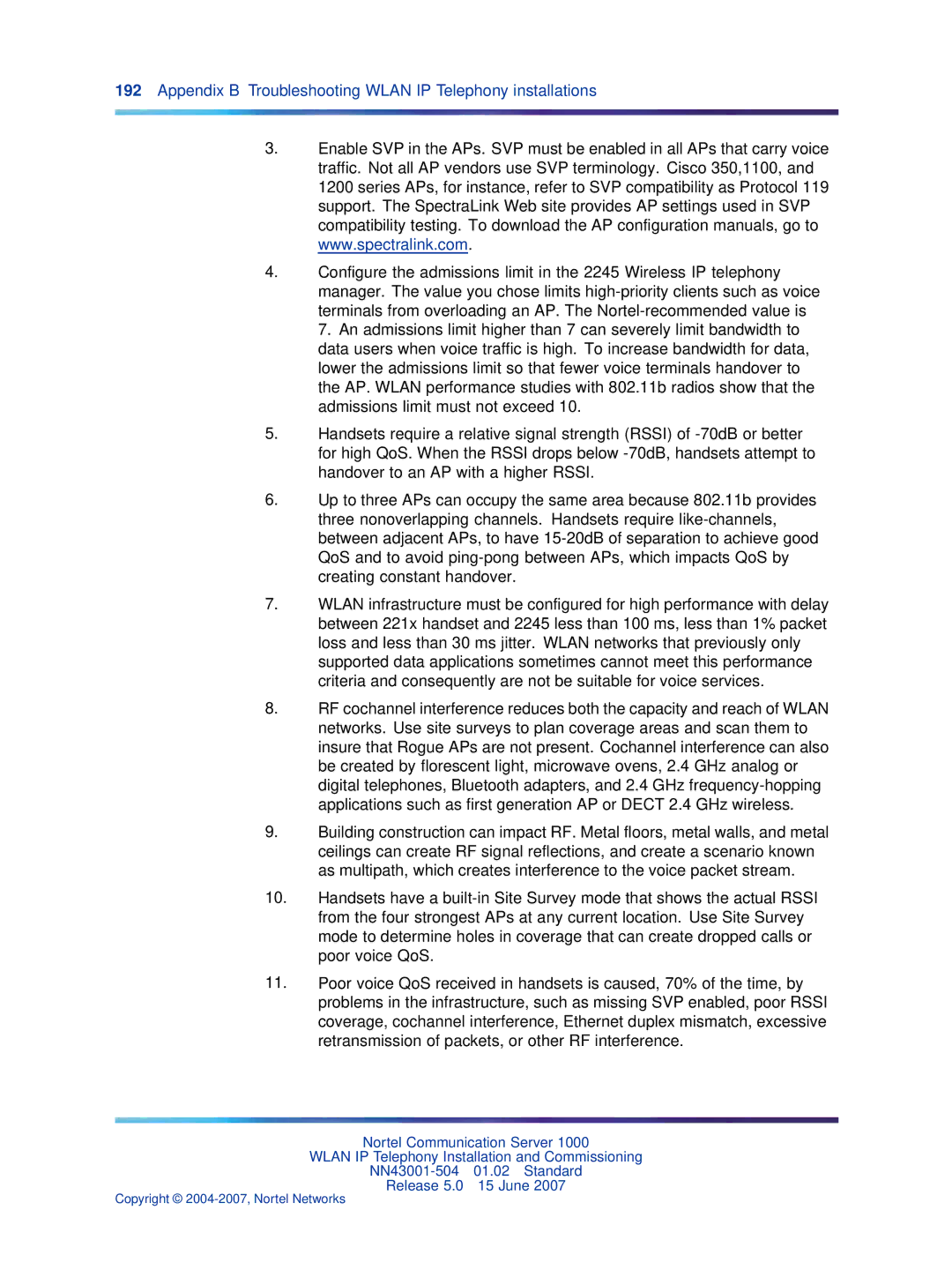
192Appendix B Troubleshooting WLAN IP Telephony installations
3.Enable SVP in the APs. SVP must be enabled in all APs that carry voice traffic. Not all AP vendors use SVP terminology. Cisco 350,1100, and 1200 series APs, for instance, refer to SVP compatibility as Protocol 119 support. The SpectraLink Web site provides AP settings used in SVP compatibility testing. To download the AP configuration manuals, go to www.spectralink.com.
4.Configure the admissions limit in the 2245 Wireless IP telephony manager. The value you chose limits
5.Handsets require a relative signal strength (RSSI) of
6.Up to three APs can occupy the same area because 802.11b provides three nonoverlapping channels. Handsets require
7.WLAN infrastructure must be configured for high performance with delay between 221x handset and 2245 less than 100 ms, less than 1% packet loss and less than 30 ms jitter. WLAN networks that previously only supported data applications sometimes cannot meet this performance criteria and consequently are not be suitable for voice services.
8.RF cochannel interference reduces both the capacity and reach of WLAN networks. Use site surveys to plan coverage areas and scan them to insure that Rogue APs are not present. Cochannel interference can also be created by florescent light, microwave ovens, 2.4 GHz analog or digital telephones, Bluetooth adapters, and 2.4 GHz
9.Building construction can impact RF. Metal floors, metal walls, and metal ceilings can create RF signal reflections, and create a scenario known as multipath, which creates interference to the voice packet stream.
10.Handsets have a
11.Poor voice QoS received in handsets is caused, 70% of the time, by problems in the infrastructure, such as missing SVP enabled, poor RSSI coverage, cochannel interference, Ethernet duplex mismatch, excessive retransmission of packets, or other RF interference.
Nortel Communication Server 1000
WLAN IP Telephony Installation and Commissioning
Release 5.0 15 June 2007
